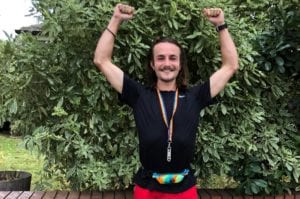The buzz at Schneider Electric right now centers on the Paris Marathon, of which we just became the title sponsor. Many of my colleagues are training to complete the full 26.2 mile race through the City of Lights in April, and I am reminded of this quote: “It’s a marathon, not a sprint.”
When looking at energy management, one could also apply this simple philosophy: look at the entire life cycle of a building, not just first cost or current run rates. How will the building perform over time? When looking at this through both CapEx and OpEx perspectives, energy management principles can prevail throughout the life cycle of a building, saving both money and energy.
Some questions that a building owner or operator can ask while running the race are:
- What is my strategy? How will my building help my business/organization meet its goals?
- How do I buy? This question applies whether this is the initial capital expenditure or ongoing life cycle costs.
- How do I control? Also, what is the operating plan for the building?
- How do I optimize? What is the long-term plan for efficiency?
- And a telling question—which world-class athletes constantly evaluate—how am I performing?
A brilliant colleague of mine came up with the thought of “transforming energy into an asset,” and I like the thought of that. When thinking about all that a marathoner does to prepare for her race, it’s easy to see how she does it: a training plan, purchasing the proper clothing and footwear, daily runs, and even the carb-loading she will do the night before the big run. Her preparation does not begin the morning of the race, but well in advance.
By considering the five questions above, a building owner can prepare for his own marathon (or the life cycle of his building or portfolio of buildings). More so, building owners and operators can partner with energy management and efficiency experts like Schneider Electric to gain support through every step of the building life cycle, often gaining energy savings of up to 30%. Talk about running an efficient race and transforming energy into an asset!
Think of this theory—it’s a marathon, not a sprint—as a way to include efficiency throughout all stages of your building, achieving optimum results at every stage of the energy management life cycle. This way both the building (and my athletic Schneider Electric colleagues running the Paris Marathon) can cross the finish line with success.



